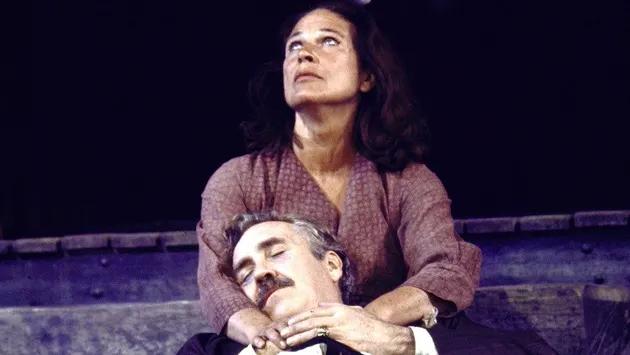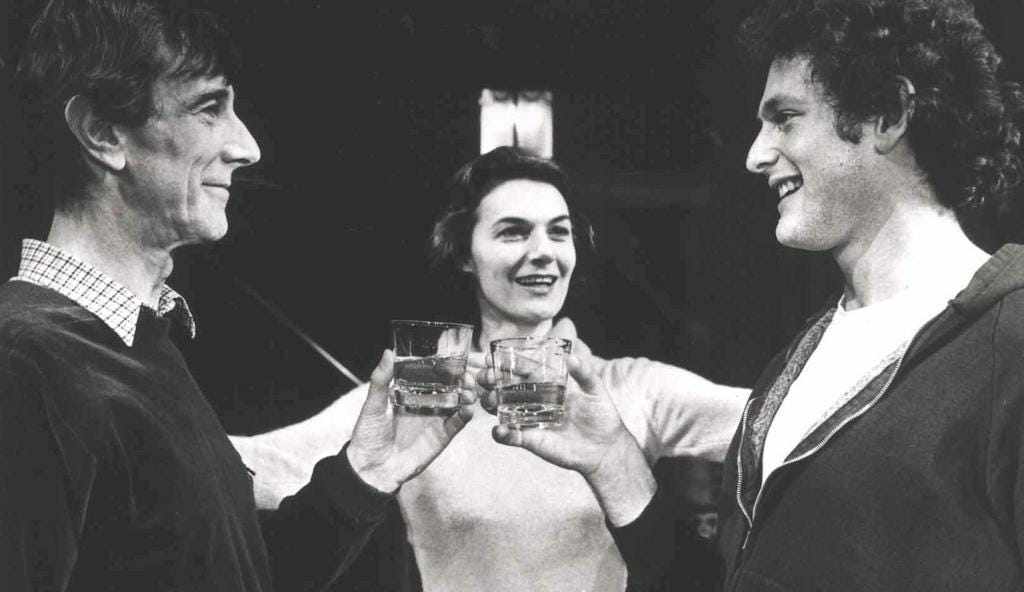
December 27, 2022: Theatre Yesterday and Today, by Ron Fassler
In the year since Stephen Sondheim’s passing in November 2021, New York has been treated to new productions of three of his major works: Company, Into the Woods and Merrily We Roll Along, with Sweeney Todd (to star Josh Groban and Annaleigh Ashford) waiting in the wings. Also, a number of books were released in the last few months to capitalize on renewed interest. Three of them (one written respectively by a critic, an acquaintance and a work colleague) are D.T. Max’s Finale: Late Conversations with Stephen Sondheim, Paul Salsini’s Sondheim and Me, and Paul Ford’s Lord Knows, at Least I Was There: Working With Stephen Sondheim. All make for interesting reads, but the best of them by a mile is Mary Rodgers’ Shy (written with an assist from the New York Times chief theatre critic Jesse Green), due primarily to the unparalleled sixty-plus year relationship Rodgers shared with Sondheim (yes, she’s the Mary in Merrily). But for me, all that’s really necessary for deep dives into Sondheim’s heart and soul are his Finishing the Hat, published in 2010, and its follow-up, Look, I Made a Hat, released a year later in 2011. These essential volumes are easily within reach on my bookshelves and will remain so until death do us part.

Finishing the Hat contains the subtitle “Collected Lyrics (1954-1981), with attendant Comments, Principles, Heresies, Grudges, Whines, and Anecdotes,” while Look, I Made a Hat was upgraded to “Collected Lyrics (1981-2011) with attendant Comments, Amplifications, Dogmas, Harangues, Digressions, Anecdotes and Miscellany.” These books are all you’ll ever need to attempt mastering what it is about Sondheim’s work that will always fascinate and endure. I endlessly enjoy cozying up in my easy chair with either volume to pore over various chapters as suits my mood.
Over the past few days, I decided to solely parcel to myself the digressions in the books where Sondheim discusses in detail the work of other lyricists, though doing so only with those long dead. He had no interest in discussing the work of living lyricists in spite of occasionally praising (with little to no detail) contemporaries like Sheldon Harnick, Lee Adams and Jerry Herman (who didn’t pass till 2019). Some people didn’t care for these musings on the works of celebrated masters of the form like his mentor, Oscar Hammerstein II, or lesser notables such as Noël Coward (lesser in the eyes and ears of Sondheim). For me, the honesty with which he writes is refreshing. It’s also dishy, which is fun, especially with regards for what a stickler Sondheim was about certain rules or, as he might refer to them, principles.
And yes, they are almost all exclusively men. One of just two “dolls” referred to in the title of this column is Dorothy Fields who, by virtue of her sex, stood tall amongst the giants with whom she collaborated like Harold Arlen, Cy Coleman, Jerome Kern, Jimmy McHugh and Arthur Schwarz. Sex aside, she was a first-rate lyricist, held in high esteem by Sondheim who happened to know her personally. By random coincidence, his father Herbert introduced Fields to her husband, Eli Lahm (the young Steve affectionally called her “Aunt Dorothy”). According to Meryle Secrest in her 1998 biography Stephen Sondheim, she wrote that “after they married and had children, Aunt Dorothy was at their apartment constantly, but Sondheim had no idea what she did until he became an adolescent.” Even with that familiarity, Fields is well-deserving of the epithet Sondheim applies to her as “the most underrated of the major lyricists.”
.jpg)
Fields burst onto the scene at age twenty-two with the musical revue Blackbirds of 1928 and the hit song “I Can’t Give You Anything but Love, Baby,” written with Jimmy McHugh, an auspicious beginning. Her father was a famous vaudevillian, Lew Fields, part of the comedy team of Weber & Fields and, with her brother, Herbert, she co-wrote the books to many musicals, Annie Get Your Gun, among them. She penned the words to the scores of Redhead in the 50s, Sweet Charity in the 60s and Seesaw in the 70s. Sondheim writes glowingly of her ability for the colloquial, which he compares favorably to Frank Loesser. Sondheim believes Fields and Loesser were the best practitioners of this art, one he describes “in which the words sit so naturally on the music that even with the repetitions of refrain lines, the tinkle of rhymes and the other small formalities of lyric writing the listener is seldom aware of the lyricist’s presence; both of them hide their artifice behind their art.”
That sentence alone is an example of Sondheim’s little known gift for writing prose as concise and impassioned as his overwhelming power with lyrics. It shouldn’t be a surprise that he crafts sentences as beautifully and meticulously as he does words to a song, and yet it still feels revelatory.
The other craftspeople he offers opinions on include Alan Jay Lerner (nay), E.Y. “Yip” Harburg (yay), Lorenz Hart (nay), Cole Porter (big yay) and Ira Gershwin (big nay). Even when taking his mentor, Oscar Hammerstein II, to task, it is done lovingly. Listen, nobody’s perfect, and with Sondheim, whose ear was in tune like few others, it pains him when a good lyric goes bad, or a bad lyric is applauded. He takes great pains to point out the good lyrics in Porgy and Bess are by DeBose Heyward (these days mostly unsung as a lyricist) and that the bad ones are by Ira Gershwin. Sondheim goes further with his assessment of Heyward, calling his lyrics for Porgy and Bess “the most beautiful and powerful in our musical-theatre history.”
The other “doll” discussed in these books, even if it’s only two paragraphs in Look, I Made a Hat, is Carolyn Leigh. Though she had a short reign as a female lyricist on Broadway due to a late start and an early death, she excelled first in popular song with a number of hits including “The Best is Yet to Come” and “Witchcraft” (with Cy Coleman) and “Young at Heart” (with Johnny Richards). Her four Broadway shows were two with Coleman; 1960’s Wildcat, a failed egocentric musical for Lucille Ball that provided the hit “Hey, Look Me Over” and 1963’s Little Me, a Sid Caesar vehicle that features some exceptional lyric writing. 1968’s How Now Dow Jones (a guilty pleasure) was written with Elmer Bernstein and she also wrote songs for the iconic 1954 Peter Pan with Mary Martin (“I Won’t Grow Up” is hers). However, she and composer Moose Charlap’s work on that show (billed out of town as “a play with music”) was enhanced when Jule Styne, Betty Comden and Adolph Green were hired by its director, Jerome Robbins, to beef up the score.

Sondheim thought very highly of Leigh, though he felt that she (like Fields) suffered from self-containment in their lyric writing. Of Leigh, Sondheim wrote: “Character interested her, but only as aspects of herself. Except for gender pronouns, many of her theater songs could be switched among the show’s characters with little disruption.” To Sondheim, this wasn’t so much a sin as a flaw, one to which he did not prescribe. The specificity of his work is what truly sets him apart from almost everyone else who wrote for the theatre. Of course, that was both his blessing and somewhat of a curse. Just like in Fiddler on the Roof and Tevye’s response to Perchik’s cry that “Money is the world’s curse,” I say, “Then may the Lord smite me with it—and may I never recover!”
If you enjoy these columns, check out Up in the Cheap Seats: A Historical Memoir of Broadway, available at Amazon.com in hardcover, softcover and e-book. Also, please follow me here on Scrollstack and feel free to email me with comments or questions at Ron@ronfassler.org.





















Write a comment ...